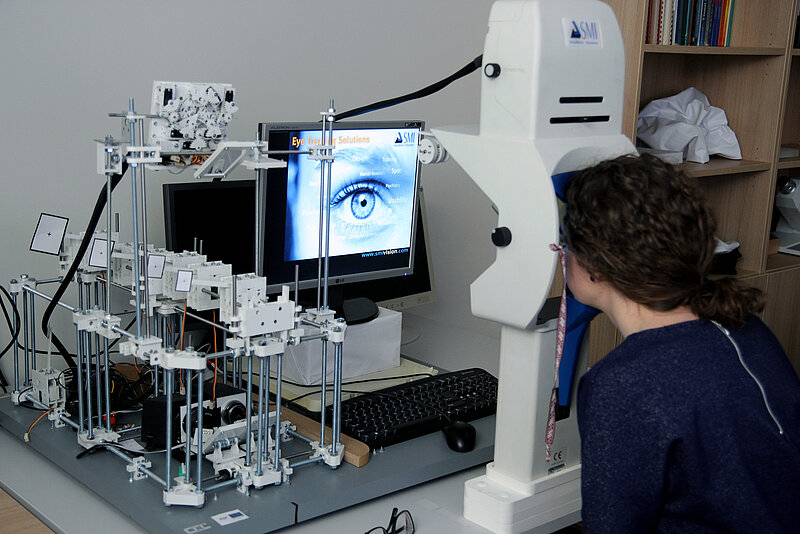Ziņa

Laser Center (LC) of the Faculty of Physics, Mathematics and Optometry (FMOF) of the University of Latvia (LU), Laboratory of Magnetic Soft Materials (MMML) and LU Institute of Physics (FI) will receive new software and a workstation worth 15074.54 euros thanks to the donation from SIA “Mikrotīkls” (MikroTik), administered by LU Fund. This is a part of "Simulation for Science Stimulation" project. The software and workstation will be used to perform resource-intensive physical simulations using the COMSOL simulation environment. The donation is an example of how a science-intensive company helps the development of science in Latvia, while increasing the possibility of the emergence of new, science-based companies.
Trends observed in the world's leading scientific institutions (USA, Switzerland, Germany) show that there is currently increasing emphasis on numerical modelling of different systems. This is easily explained by the fact that the most efficient operation of the various components becomes critical in the perspective of the various applications. Precise numerical models not only save the resources for direct building of equipment, but also greatly save the time of the specialists involved - the creation of a model (prototype) for the equipment is a time-consuming process and the optimization of the various components in the appearance of real-life equipment is increasingly complex.
The operation of various equipment is often provided by the interaction between different components. Determining which of those is responsible for suboptimal equipment operation can take several weeks. It is observed all over the world that in the perspective of physical models, which are interesting for LU FMOF LC Color Center Laboratory, LU FMOF LC Atomic and Molecular Physics Laboratory, LU FMOF MMML, LU FI Heat and Mass Transfer Laboratory and LU FI Magnetic Hydrodynamics Technology Laboratory, directly COMSOL modeling environment is utilized.
The target audience of the project is LU scientists and students, a total of about 70 active and future scientists. The COMSOL software and workstation will be used in the following operations:
-
calculation of magnetic field source geometries;
-
formation of efficient microwave emitters;
-
simplified microfluidic systems, small-scale flow modeling, and the study of the effects of magnetic and electric fields on such environments;
-
modeling of combustion processes;
-
improvement of the interpretation of experimental results; calculation of permanent magnet systems and the liquid metal flow generated by them;
-
in the continuation of numerical research and also in the development of new simulation applications on an experimental basis.
This project has the potential to contribute to a number of projects:
-
LU LC projects related to early identification of Malaria in the body, magnetic swimmer pellets for drug transport, research of new thin film materials, as well as development of magnetometers related to both national security improvement (NATO project) and space research (European Space Agency project);
-
LU FI Laboratory of Magnetic Hydrodynamics Technologies for projects related to the development of rotating magnet equipment for pumping, degassing and remelting of metal in metallurgy, research of liquid metal flows for heat removal in the context of fusion reactors;
-
LU MMML projects related to the application of magnetic field for efficient mixing of liquids, development of new materials using improved microchannel systems;
-
LU FI Heat and mass transfer laboratory for projects related to the description of the biofuel combustion process, as well as magnetic fluid with microstructure in hydrodynamics.
LU obtains the growth of science in the form of high-quality scientific research from the project. This is the basis for science-based higher education, as well as is the financial driving force for science at LU. This project provides a direct contribution to the preparation of young specialists by providing training in an internationally widely used simulation environment (in combination with a computer capable of performing such simulations in a reasonable time) at bachelor's, master's and doctoral levels, as well as unlocks wide opportunities for postdoctoral and experienced students and researchers, thus increasing competitiveness.
_________________
About the University of Latvia Foundation
Since 2004, the University of Latvia Foundation has provided an opportunity for patrons and cooperation partners to support both the University of Latvia and other leading Latvian higher education institutions, thus investing in the future of Latvia. The priorities of the LU Foundation are to support the best students and researchers, to promote the creation of a modern study environment, as well as the construction and reconstruction of university buildings.

 CONFERENCE
CONFERENCE